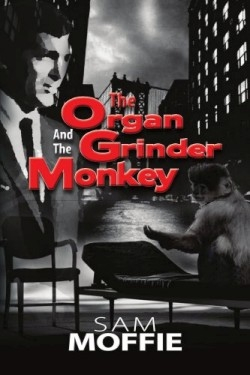The Organ Grinder and the Monkey
Sam Moffie’s second novel the bold and picaresque The Organ Grinder and the Monkey is a story of merriment madness and murder that takes place in settings including the Italian neighbourhood of Steubenville Ohio; a Jewish community of Brookline Massachusetts; the cosmopolitan New York City; a police station; a silent movie theatre; and a strip club. The story comes to an eye-popping life-ending finale in a West 82nd Street apartment.
The novel centers on the intertwining of the lives of the primary protagonists Seymour Petrillo Irving Hanhart and Constance Powers and how they eventually collide as perpetrator victim and cop. They are supported by a cast of unique and credible human and animal characters and a hatful of historical anecdotes about Steubenville icons such as singer Dean Martin porn star Traci Lords and gambler Jimmy “The Greek” Snyder. The author also includes sometimes lengthy expositions about silent films*.* Throughout the novel there’s an overlay of social commentary and numerous references to the Mafia therapy and therapists the philosophy of Alcoholics Anonymous and the twelve-step program of Al-Anon. It also includes several scenes of sex and extreme violence suitable to the development of the plot and characters but probably not to the sensibilities of all readers.
The book’s humor is presented in conventional ways with witty dialogue a police captain’s mangled clichés and character’s names like Heada Lettuce and Josef Joseph and in extraordinary ways by referencing Moffie’s own first book Swap. The author’s characters and his storytelling techniques at times evoke John Irving and Kurt Vonnegut two authors he refers to here. His descriptions of the murders in his story smack of Bret Easton Ellis and American Psycho. Moffie has created his own set of seven “Reading Group Questions and Topics for Discussion” one of which is the intriguing question “Who is the organ grinder and who is the monkey of the book title? Why?” It’s a question that won’t be easily answered because of the complexity of the story and the characters.
Despite the entertainment value of the story and the eye-catching cover however the book is compromised by a number of typos grammatical errors and spacing slip ups as well as undersized typeface and narrow margins. The final description of the Bela Lugosi film although interesting also seems redundant. Despite these bumps it’s well worth the grind.
Disclosure: This article is not an endorsement, but a review. The publisher of this book provided free copies of the book and paid a small fee to have their book reviewed by a professional reviewer. Foreword Reviews and Clarion Reviews make no guarantee that the publisher will receive a positive review. Foreword Magazine, Inc. is disclosing this in accordance with the Federal Trade Commission’s 16 CFR, Part 255.

